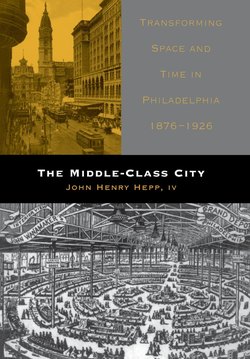The Middle-Class City

Реклама. ООО «ЛитРес», ИНН: 7719571260.
Оглавление
John Henry Hepp IV. The Middle-Class City
Отрывок из книги
The Middle-Class City
Transforming Space and Time in
.....
Take, for example, the case of the Victorian department store. In 1877, when John Wanamaker converted his men’s clothing store to Philadelphia’s first department store, he was neither terribly rich nor powerful. It is difficult to argue that he or his store could impose anything upon its customers. In a city with hundreds of retail establishments, shoppers could easily go elsewhere if they did not like what Wanamaker was doing and how he was doing it. Instead we can see the fantastic success of the Wanamaker store and its counterparts as reflecting the shopping rituals and values of their customers. As Wanamaker and his competitors served a largely middle-class market, it is the values of the bourgeoisie that we can find in those early department stores.23
My starting points for recreating this shared culture are the diaries, memoirs, oral histories, and letters left by the middle-class women and men of the region. I use dozens of these sources to follow bourgeois Philadelphians as they rode trains and trolleys, read newspapers, and shopped at department stores. These first-hand accounts serve as individualized guidebooks to the metropolis: highlighting for each person activities that were typical and unique, everyday and extraordinary. I analyze this information both quantitatively (how often people used particular facilities) and qualitatively (how people perceived the institutions). To place these men and women in broader context, I turn to census data and city directories. The manuscript census and the directories create a better understanding of the precise settings in which the historical actors lived while the published census figures establish the societal framework.24
.....